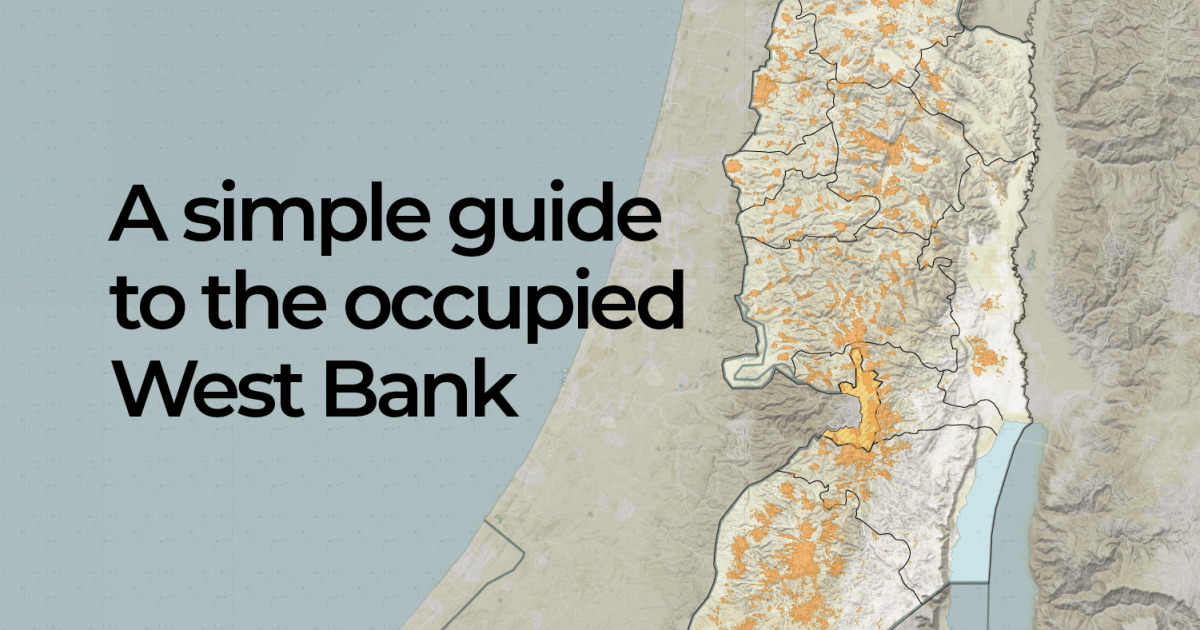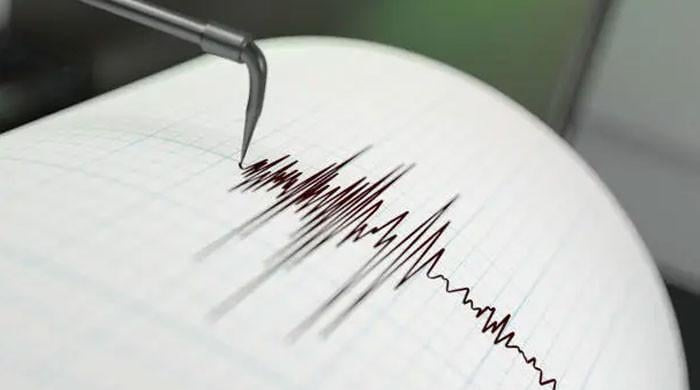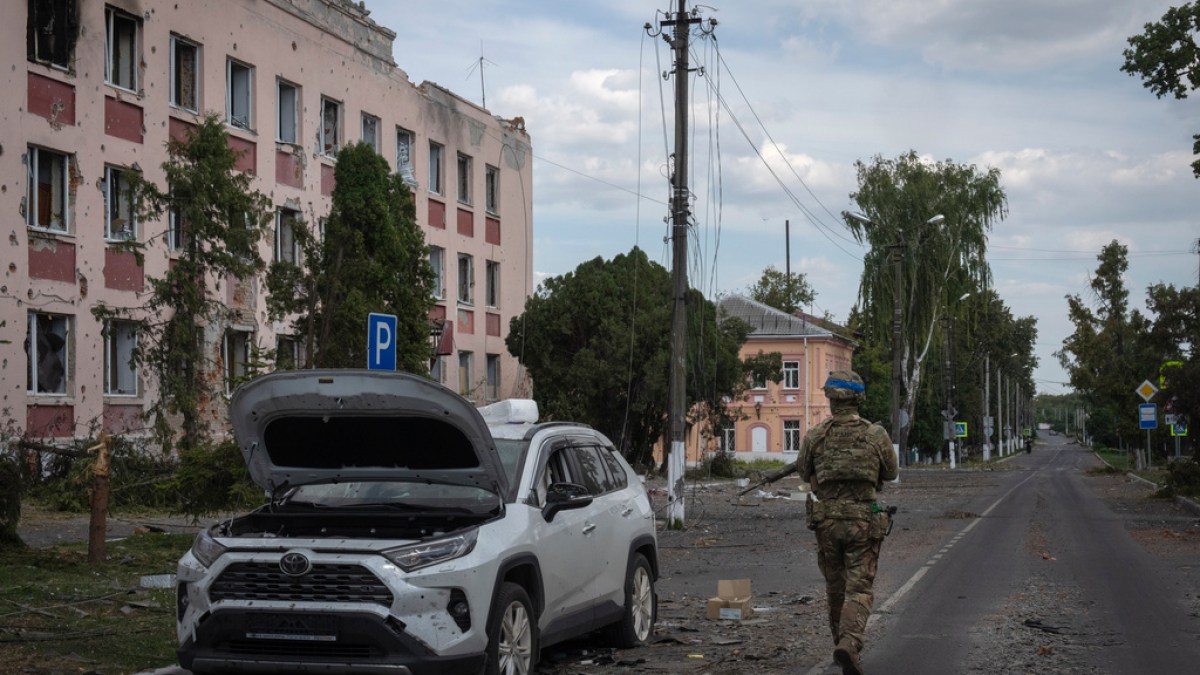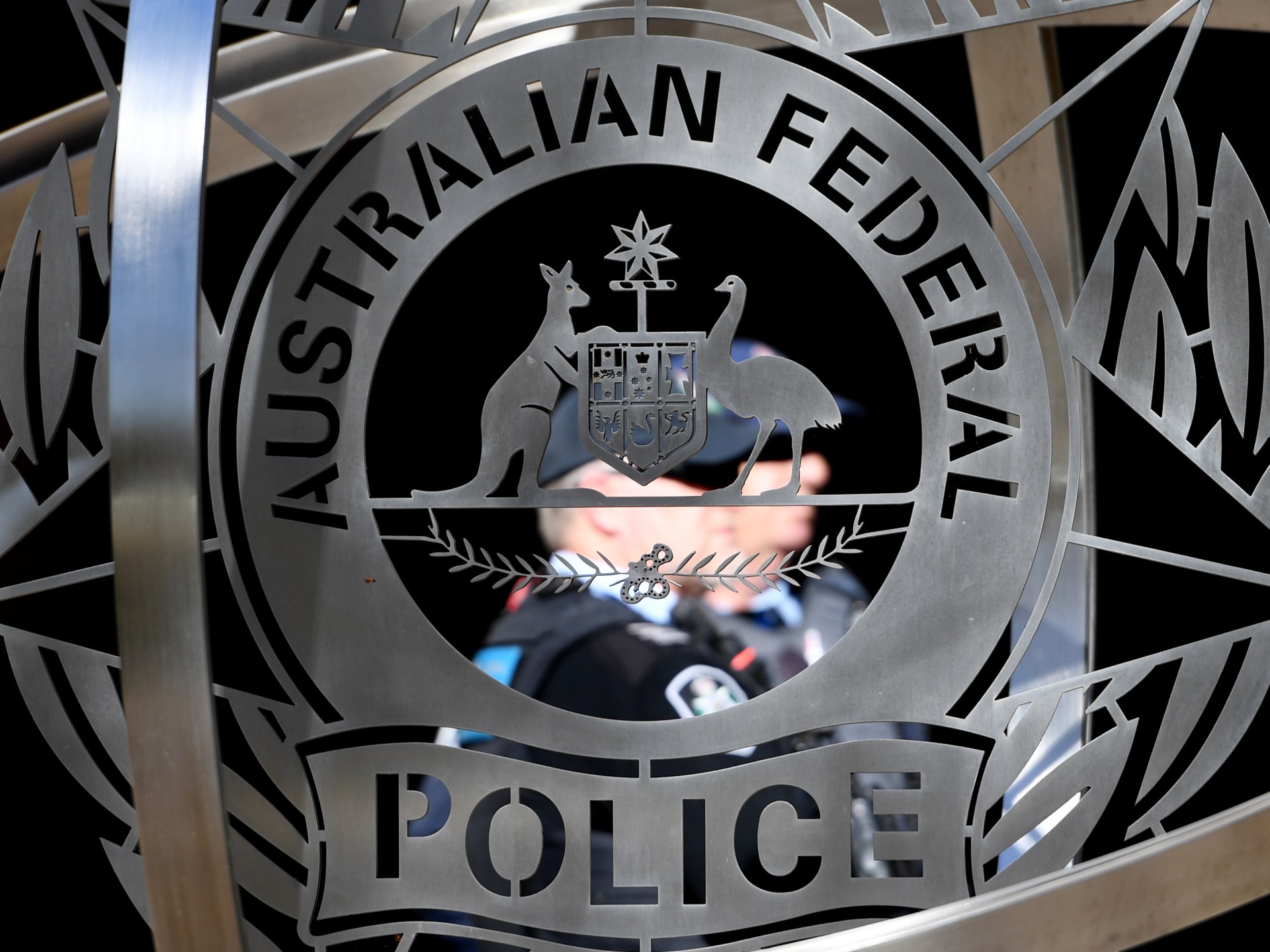As Israel's war on Gaza, which has killed more than 41,000 people, approaches a year, attacks in the occupied West Bank continue, with at least 703 people killed by Israeli forces since October 7.
Even though Gaza and the West Bank are separated by just 33 kilometers (21 miles) at their closest points, Israeli restrictions have long prevented travel and interaction between the two Palestinian territories, even before the recent conflict.
To better understand the impact of these restrictions and the situation on the ground, here is a visual overview of the geography, history and living conditions of the millions of Palestinians in the West Bank.
1 – How big is the occupied West Bank?
The West Bank, including occupied East Jerusalem, covers an area of 5,655 square kilometres (2,183 sq mi), making it approximately 15 times larger than the Gaza Strip, which stretches over 365 square kilometres (141 sq mi).
Compared to other places in the world, the bean-shaped West Bank is about the same size as Delaware in the United States or Bali in Indonesia. It is about half the size of Northern Ireland in the United Kingdom and about a third the size of Gauteng province in South Africa.
2 – How did the West Bank get its name?
The West Bank, called al-Daffah in Arabic, is located on the western side of the Jordan River, from which it derives its name.
The 251-kilometre-long river flows from the Lebanese mountains to the Dead Sea, providing fertile soil for the surrounding valley. The Jordan Valley makes up 30 per cent of the West Bank and accounts for half of its agricultural land.
Due to strict Israeli controls and restrictions, Palestinians do not have their own airport. Instead, to travel in and out of the West Bank, Palestinians with the necessary permits must use the King Hussein (Allenby) Bridge over the Jordan River to reach Jordan and other destinations.

3 – How many people live in the West Bank?
The West Bank, with approximately 3.3 million Palestinian inhabitants, has about one million more residents than Gaza.
The West Bank is divided into 11 governorates. Hebron, or al-Khalil in Arabic, is the most populous governorate, with some 842,000 inhabitants. It is followed by Jerusalem (500,000), Nablus (440,000), Ramallah and el-Bireh (337,000) and Jenin (360,000).
In addition, some 700,000 Israelis live in illegal settlements on Palestinian land. More on Israeli settlers later.

4 – Israeli occupation of the West Bank
Since 1967, Israel has maintained a military occupation of the West Bank, including arrests, checkpoints, home invasions, demolitions, and frequent raids and assaults.
To better understand the daily struggles Palestinians face under Israeli occupation, take a look at this illustrated guide.
In the past 12 months, Israel has demolished at least 1,697 Palestinian structures, mostly homes, and displaced 4,233 people, according to UN figures. This amounts to an average of five structures destroyed per day.
The 2024 figures represent the highest number of structures destroyed in a year since the UN began tracking in 2009.
Over the past 15 years, Israel has demolished at least 11,500 Palestinian-owned structures, three-quarters of them located in Area C.

5 – The differences between zones A, B and C
As part of the 1993 Oslo Accords, signed by the Palestine Liberation Organization (PLO) and Israel, the occupied West Bank was divided into three zones: A, B and C.
The Oslo Accords constituted the first direct peace agreement between Palestinians and Israelis and led to the formation of the Palestinian Authority (PA), an administrative body that would be responsible for Palestinian internal security, administration and civil affairs in the self-governing areas, for an interim period of five years.
Area A Initially comprising 3 percent of the West Bank, it grew to 18 percent in 1999. In Area A, the PA controls most affairs.
Area B It represents about 22 percent of the West Bank. In both areas, while the PA is in charge of education, health and the economy, Israelis have full control of external security, meaning they retain the right to enter at any time.
Area C It represents 60 percent of the West Bank. Under the Oslo Accords, control of this area was to be handed over to the Palestinian Authority. Instead, Israel retains full control over all matters, including security, planning and construction. The transfer of control to the PA never took place.

6 – Illegal expansion of Israeli settlements
Israeli settlements are Jewish communities built on Palestinian land. Approximately 700,000 Israeli settlers live there. in at least 250 settlements and outposts in the occupied West Bank and East Jerusalem.
Israeli settlements are illegal under international law because they violate the Fourth Geneva Convention, which prohibits an occupying power from moving its population into an area it occupies.
The settler population is growing faster than Israel's total population: approximately 10 percent of Israel's 6.8 million Jewish citizens live in these areas. Settlers receive Israeli citizenship and government subsidies that reduce their cost of living.

7 – Separation wall and Israeli checkpoints
Since 2002, Israel has been building a wall that stretches more than 700 kilometers (435 miles) and extends deep into Palestinian territory.
Israel has also built hundreds of roadblocks and checkpoints, severely limiting Palestinians' freedom of movement.
While Palestinians may have to wait for hours at these checkpoints and travel on segregated road networks, Israelis can travel freely on their own “bypass roads” that have been built on Palestinian land to connect illegal Israeli settlements to major metropolitan areas inside Israel.

8 – Occupied East Jerusalem and the Old City
Jerusalem, a holy city for Muslims, Christians and Jews, has had the western part of Jerusalem under Israeli control since 1948, with a Jewish majority. East Jerusalem, including the Old City, has been under Israeli occupation since 1967 and is predominantly Palestinian.
Since its annexation in 1980, Israel has considered the entire city of Jerusalem to be part of its territory, which is not internationally recognised. For this reason, Israeli maps do not show East Jerusalem as part of the occupied West Bank.
The Old City, located in East Jerusalem, is home to some of the holiest sites in Islam, Judaism and Christianity. This area, less than a square kilometer in size, is home to the Al-Aqsa Mosque, the Wailing Wall, the Cathedral of St. James and the Church of the Holy Sepulchre, among others.

9 – Palestinian refugee camps
The West Bank is home to at least 870,000 registered refugees, of whom about 25 percent live in 19 camps established after the 1948 Nakba.
On May 14, 1948, the British Mandate expired and Zionist leaders announced they would declare a state, sparking the First Arab–Israeli War.
Zionist gangs expelled some 750,000 Palestinians and took over 78 percent of the territory. The remaining 22 percent was divided between the West Bank and the Gaza Strip.
Some 1.5 million Palestinian refugees live in 58 official UN camps across Palestine and neighbouring countries. In total, there are at least 5.9 million registered Palestinian refugees, most of whom live outside these camps.
The plight of Palestinian refugees is the longest unresolved refugee problem in the world.

10 – Israeli attacks in the West Bank
Since launching their most severe attacks in two decades on August 28, Israeli forces have killed at least 50 Palestinians in the West Bank.
The assaults involved hundreds of ground troops advancing in bulldozers and armored vehicles, supported by fighter jets and bomb-dropping drones.













